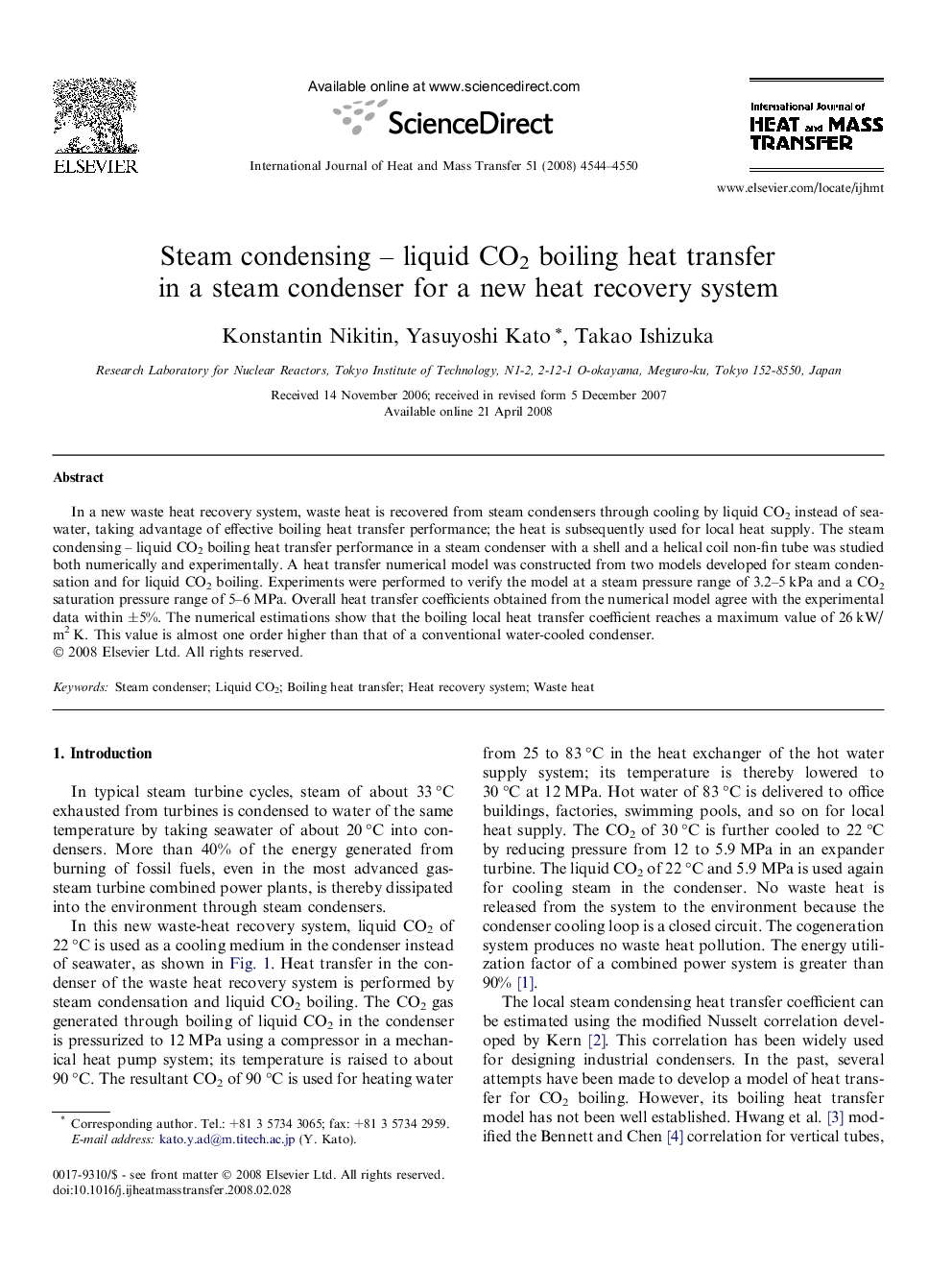| Article ID | Journal | Published Year | Pages | File Type |
|---|---|---|---|---|
| 660283 | International Journal of Heat and Mass Transfer | 2008 | 7 Pages |
In a new waste heat recovery system, waste heat is recovered from steam condensers through cooling by liquid CO2 instead of seawater, taking advantage of effective boiling heat transfer performance; the heat is subsequently used for local heat supply. The steam condensing – liquid CO2 boiling heat transfer performance in a steam condenser with a shell and a helical coil non-fin tube was studied both numerically and experimentally. A heat transfer numerical model was constructed from two models developed for steam condensation and for liquid CO2 boiling. Experiments were performed to verify the model at a steam pressure range of 3.2–5 kPa and a CO2 saturation pressure range of 5–6 MPa. Overall heat transfer coefficients obtained from the numerical model agree with the experimental data within ±5%. The numerical estimations show that the boiling local heat transfer coefficient reaches a maximum value of 26 kW/m2 K. This value is almost one order higher than that of a conventional water-cooled condenser.
